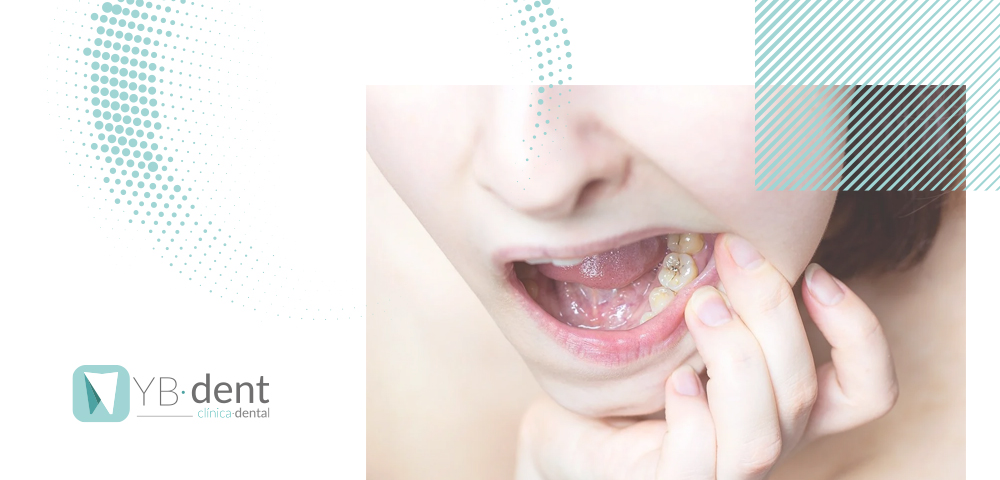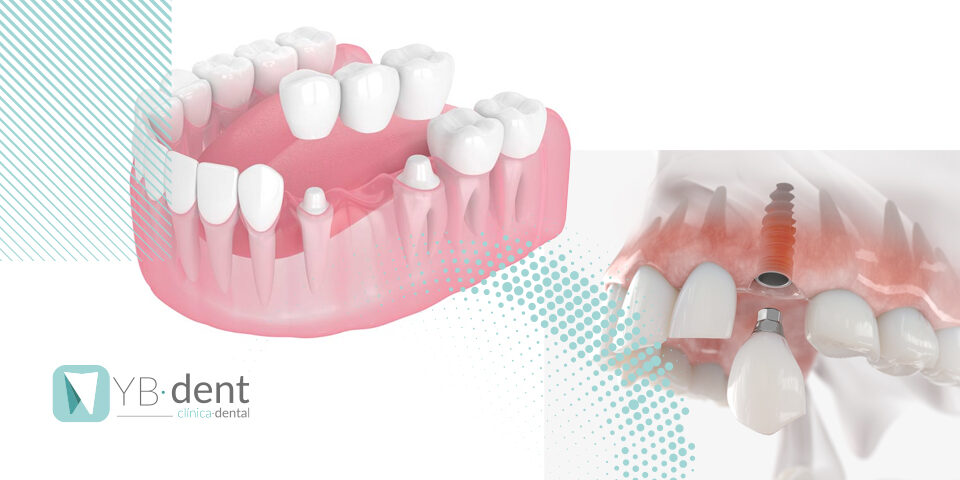Cómo identificar las muelas cariadas y cómo tratarlas

Uno de los dolores más molestos y que más dolores de cabeza nos pueden ocasionar, es sin duda el dolor de muelas. En la Clínica Dental YB-dent, es uno de los casos que más nos encontramos, y este molesto dolor en muchas ocasiones viene por muelas picadas o muelas cariadas.
Puede que las caries, y en concreto las muelas con caries, es uno de los mayores miedos de la población cuando hablamos de dentistas. Y es que esta creencia tiene su fundamento, alrededor del 80% de la población tendrá una caries en su muela durante su vida adulta.
¿Cómo se general las caries en las muelas o muelas picadas?
Una caries no es más que una desmineralización del diente causado por una bacteria. Estas bacterias se alimentan de hidratos de carbono, que los encontramos normalmente en los azúcares. Estas bacterias la convierten en ácidos mediante la fermentación y este ácido sobre el diente de forma repetida es el que debilita el esmalte y al final lo rompe permitiendo que la bacteria penetre en nuestro diente pudiendo, en los peores casos, causar abscesos en nuestros dientes; un absceso es una infección del tejido blanco de nuestro diente que puede resultar muy molestos y doloroso.
La explicación anterior es el proceso general, pero las caries pueden generarse por varias causas:
Mala alimentación
El consumo repetido de hidratos de carbono, sobre todo azúcares y bebidas ácidas, es una de las causas principales de la caries. Es por eso que a los niños muchas veces les restringen los dulces
Genética
Es cierto que hay tipos de esmalte que son más propensos a las caries y esto viene por genética.
Grietas o surcos en los dientes
Una grieta es un acceso directo para las bacterias a nuestro diente, por lo que cualquier golpe o daño que haya padecido nuestro diente puede ocasionar de forma fácil una caries.
Sarro o una limpieza deficiente
Si no eliminamos correctamente la placa de nuestra boca, esta se puede volver sarro o cálculo dental, y esto imposibilitará más la limpieza y eliminación de las bacterias, creando caries.
¿Cómo identificar una muela picada o una caries en la muela?
La mejor forma de identificar y asegurarte que tienes una muela picada es visitando a un especialista, ya que con las visitas regulares al dentista nos aseguraremos de encontrar y poner remedio a pequeños problemas, sin necesidad de llegar que la muela nos duela y nos ocasione un problema más grave. Pero mientras tanto, te dejamos algunos de los síntomas más comunes.
Dolor
Aunque las caries no suelen doler, el dolor es indicativo de que la caries se está volviendo un problema más grave. Este dolor suele ser punzante y en un dolor en concreto del diente.
Infección
El dolor viene acompañado por una infección, ya que como decíamos, normalmente el dolor aparece en una fase avanzada de la caries.
Color
Nuestro diente se volverá de un color marrón, o con manchas.
Halitosis
O mal olor y sabor de boca, que vendrá provocado por una infección.
¿Cómo se trata una muela picada?
Como decíamos antes, las caries es un proceso gradual, por lo que su tratamiento también dependerá de hasta dónde haya llegado la bacteria en nuestro diente.
Empaste
Es el tratamiento más simple, se trata de limar la parte del diente que la bacteria ha llegado a nuestro diente y taparlo mediante un empaste.
Endodoncia
Si la bacteria ha llegado a la parte interna de nuestro diente, la pulpa, se deberá realizar una endodoncia, lo que popularmente se conoce como matar el nervio. Esto se trata de limpiar el diente hasta la pulpa vaciando el interior de la muela, sellando después para evitar que las bacterias penetren en el diente.
Extracción
Es la última opción y los especialistas lo realizan en el caso de que la infección de la bacteria esté muy avanzada y el diente no pueda salvarse. Lo que se procederá a extraer y reemplazar el diente por un implante.
Recuerda que visitar regularmente a un especialista evitará llegar a dolores y molestias en tus dientes, así que pide ya tu cita.



